Avast vs Webroot: Which one to choose?

When it comes to user-friendly, low-impact, and capable antivirus solutions, these two products are always on top of the list. But which one is better – Avast or Webroot? In this post, we’ll carefully examine both programs and compare them to each other to find the more preferable pick.
Main Features of Webroot and Avast
Let us start by taking a close look at the feature sets of Avast and Webroot. In many ways, they are similar to each other, but there are also many differences worth talking about. Avast is appealing to a broader audience; Webroot is the choice of a much smaller group of users.
Webroot antivirus
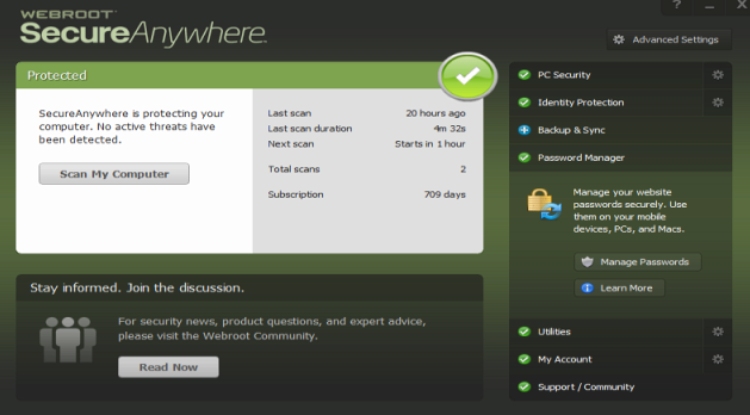
The company positions Webroot as an antivirus solution for the future. But does it offer what a regular user needs today? Here is a list of the standout features:
- Anti-malware protection (eliminates Trojans, viruses, and other threats)
- Ransomware protection (detects malicious files that encrypt your data and demand ransom)
- Real-time anti-phishing (blocks malicious/fake sites, warns the user before he/she visits)
- ID theft and data protection (keeps the hackers from stealing your identity and credentials)
- Password management
- Optimization tools (for boosting overall performance)
- Secure cloud storage (25GB in total – use it to store essential data; only available with the highest tier)
Avast antivirus
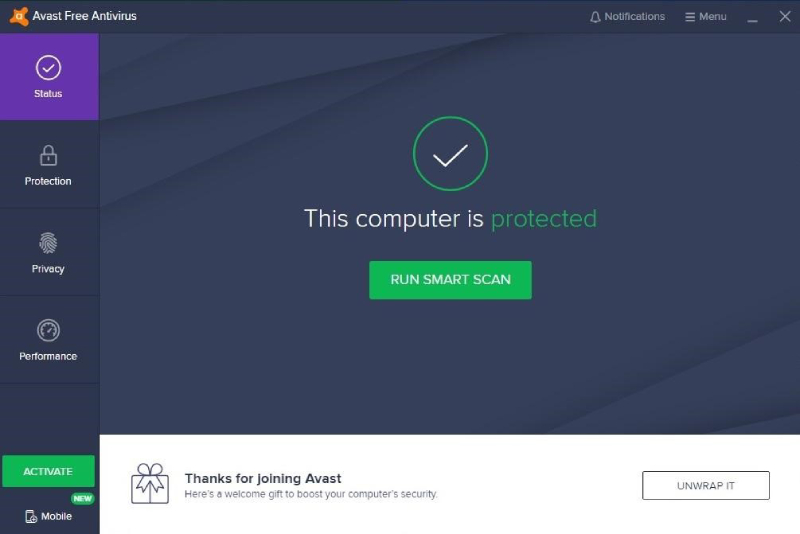
And now, let’s take a quick look at Avast. The most important features include:
- Malware protection (against all known threats)
- Wi-Fi security scans (discovers vulnerabilities in the network and warns the user)
- Safe online shopping (blocks fake websites, allowing for safe banking/shopping)
- Advanced firewall (extra layer of protection)
- Password management
- Sandbox (safely runs suspicious files without harming your OS)
- Anti-phishing and spam protection
- Ransomware protection
- Webcam protection (prevents third parties from spying on you through the webcam)
- File shredder (permanently gets rid of any files)
- Cleanup (deletes unnecessary files and speeds up the OS)
- SecureLine (a VPN for masking your online presence)
Verdict
Compared to Webroot, Avast is a significantly more advanced antivirus product. Besides, it offers a decent free edition that’s capable of protecting against modern-day threats. So, if you’re looking for a feature-packed antivirus that includes a VPN, file shredder, sandbox, and other vital tools, we recommend picking Avast over the competition.
Malware Protection: Webroot or Avast
Moving on with our Avast vs Webroot comparison, it’s time to talk about the most important aspect of any antivirus – malware protection. These two products are quite different and don’t use the same methods and techniques to battle modern-day malware. But which one is a more reliable antivirus?
Webroot antivirus
It is a forward-thinking program, one that implements all the latest developments in online security to block all incoming threats. It is a cloud-based antivirus product, which means most of the operations aren’t done on the user’s computer. While most “classic” antiviruses use the so-called “signature baseline,” Webroot takes a different approach.
It analyzes metadata and behavioral patterns. Apps/files that aren’t in the cloud database are immediately “suspended” (placed in a safe environment) and monitored. By blocking potentially harmful applications, Webroot gives the cloud computer enough time to process these threats. Next, once the cloud computer fully examines everything, it sends out a command to the antivirus installed on the user’s device.
As you’ll learn in the next section, this revolutionary approach has an incredibly low effect on system performance. However, in real-world tests, Webroot fails behind the competition and has average-at-best results in malware protection. It is true for the Av-Comparatives, Av-Test, and SE Labs tests. Our team’s in-house tests prove the same.
Avast antivirus
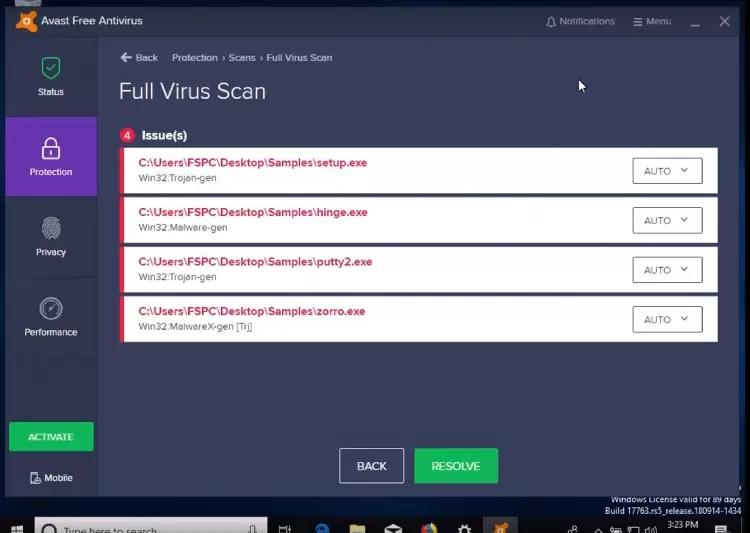
Compared to the likes of Kaspersky and Bitdefender, Avast is a bit less impressive. But, in the Avast vs Webroot competition, it’s a significantly better solution. Avast is a traditional antivirus and heavily relies on its real-time anti-malware modules to block incoming threats. And, it has a long list of extras that provide an additional layer of protection.
We’re talking about webcam protection, safe banking and shopping, Wi-Fi scans, and more. The available VPN takes security to another level and ensures no third party (like hackers or world governments) will be able to monitor your activity. In the most recent protection tests ran by AV-Test, Avast earned a perfect 6/6 score. In performance, it was ranked 5.5/6, which is a near-perfect result.
In the AV-Comparatives tests, it also performed decently, with a 99.2% blocking rate.
Verdict
When it comes to malware protection, Avast is the far more secure pick. Some might argue that because of Webroot’s unique virus detection and elimination techniques, it hasn’t been properly tested by any lab yet. While that might be true to a certain extent, it’s still clear that right now, Avast is the winner.
User Interface and Impact on the System: Avast vs Webroot
Ease of use is one of the most important aspects of any antivirus program/suite. For a regular user, an antivirus needs to be equally user-friendly, straightforward, and easy to navigate. System impact is another thing to consider. So, is Avast again a better choice, or maybe Webroot takes the lead this time?
Webroot antivirus
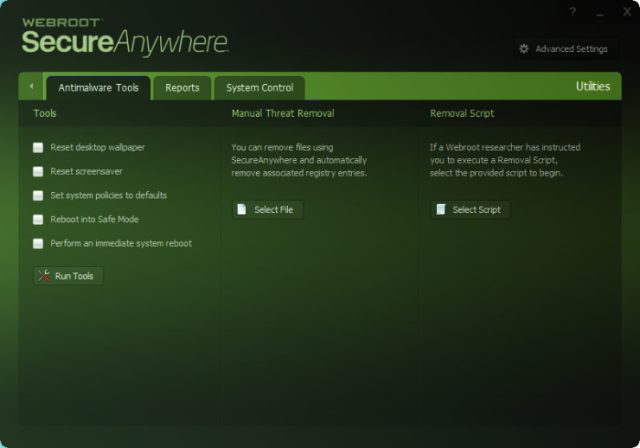
The download-installation process is very easy and straightforward. Sadly, the same can’t be said about the user interface. First of all, it’s overcrowded with menus, buttons, and extra settings, most of which will make little sense to the regular user. Plus, the main dashboard is outdated and looks like it belongs to the 2000s, not 2022.
Along with the buttons and menus, there’s also a lot of text, which isn’t something you’ll see in modern-day antivirus products. On the bright side, since Webroot does all the processing on the cloud computer, it has little to no system impact. That means it can be installed on older hardware and software and will run flawlessly.
Avast antivirus
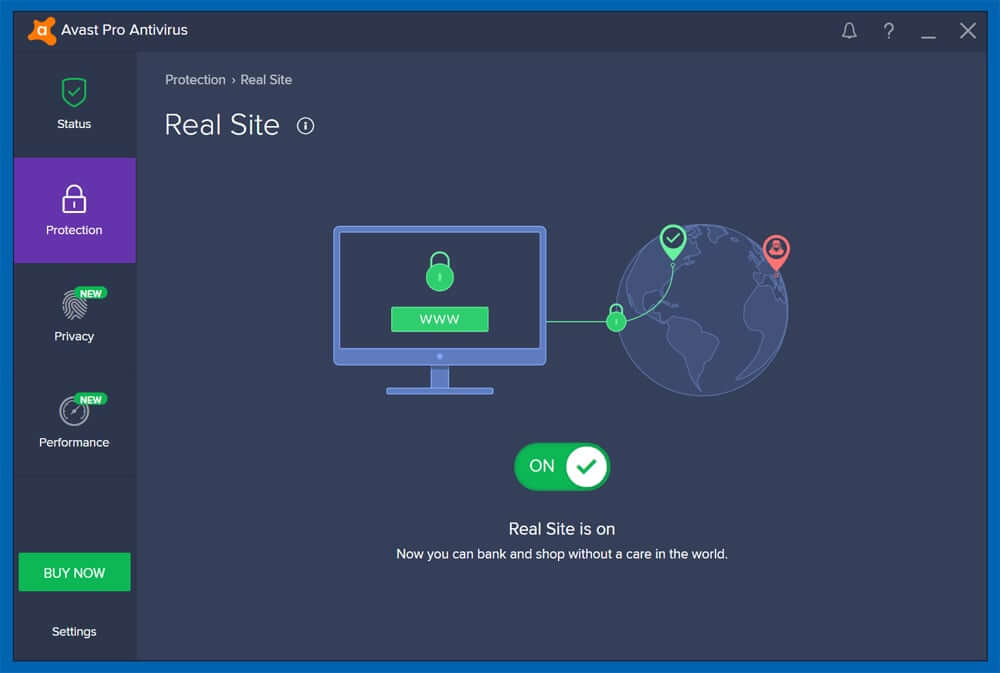
In contrast to Webroot, Avast is known as one of the friendliest antivirus programs on the market. The UI is easy to navigate, and all the essential menus are always within reach. You can run a scan from the dashboard and fix any flaws that slow down the OS. On the left side, you can check the system’s status, fine-tune the Protection and Privacy settings, and check the Performance page.
As for system impact, even though Avast relies on the local hardware to do all the “heavy lifting,” it still has a very low system impact. In the most recent AV-Test evaluation, Avast earned a 5.5/6 score in Performance. Webroot was rated the same. In a similar test conducted by Av-Comparatives, Avast received the ADVANCED+ award (the highest possible score); Webroot wasn’t even included in the test.
Verdict
Although Webroot is a cloud-based antivirus with almost no system impact, it’s still lagging behind Avast. The latter has a similarly low impact on performance but boasts a far more pleasant, straightforward, and easy-to-use interface. It is a better choice for most users, as it will take you less than five minutes to learn your way around it.
Pricing: Webroot or Avast
And what about the price-tags – what do these products have to offer? Let’s take a look at the various packages and pricing of Avast and Webroot.
Webroot antivirus
Here are the available Webroot packages:
SecureAnywhere AntiVirus – $29.99 a year. The basic plan can only protect desktop devices (Win and Mac); mobile platforms – iOS and Android – are not available. Overall, it’s a decent tier and can serve as a good starting point before you upgrade to something better. With this package, you’ll get:
- Anti-malware protection
- Ransomware protection
- Anti-phishing
- Firewall
Internet Security Plus – $44.99 a year. The biggest difference between this package and the previous one is the full support of mobile devices. It also includes a password manager that helps to protect your credentials and comes up with more sophisticated login-password combinations.
Internet Security Complete – $59.99 a year. The ultimate package is a good choice for eliminating traces of your activity online. Plus, it offers 25GB of cloud storage. Use it to keep your most precious data.
Avast antivirus

With Avast, you get to choose one of the four available tiers:
Free Antivirus. With Avast free, users can expect entry-level anti-malware protection, Wi-Fi security scans, and a password manager. And, it’s available for all four major platforms.
Premier – $69.99 a year. The next tier builds upon the basic package and adds several highly important extras:
- Safe banking and shopping
- Anti-phishing
- Anti-ransomware
- Anti-spam
- Firewall
- Sandbox
- Webcam protection
- Data Shredder
- Automatic updates
Ultimate – $99.99 a year. As the name suggests, this is the most advanced (and costly) tier. Avast Ultimate is well worth the money, though, as it adds:
- SecureLine VPN
- Passwords Premium
- Cleanup Premium
Verdict
Webroot or Avast – what do we have in terms of pricing? When put next to each other, it’s clear that Avast is significantly more expensive, mainly because of the impressive list of extras. Webroot, in turn, is less feature-packed, but it’s a lot more reasonably-priced. Therefore, if you put affordability first, go with Webroot.
Customer Support
To help users with any potential problems and to provide support, both Webroot and Avast have dedicated customer service. Let us talk about Webroot’s support first and then move on to Avast and see what it has to offer.
Webroot antivirus

On the official website, you’ll find an FAQ page, along with a fairly busy forum. To get more immediate help, we recommend the phone support. Currently, it’s available in the US, Europe, and Australia. A ticket system is also an option, and it usually takes them less than a day to hit you back. Sadly, Live Chat is only for sales questions (nothing technical).
Avast antivirus
On Avast.com, there’s a detailed knowledge base for every single product. The forum is similar to that of Webroot. Live Chat is not available; but, you can always take advantage of the email, ticket, and phone support. And, compared to Webroot, the Avast technicians are faster and more eager to help. Most direct support options aren’t available to the Avast Free users, though.
Verdict
We believe Avast is the winner in this round of the competition. First of all, it’s got more qualified agents, and it takes them less time to provide help. Furthermore, the company offers a rather expensive, yet useful Total Care service that includes remote control (allows the Avast technicians to fix your device remotely). It costs $199 a year.
Our Verdict
This is it for today! We ran Avast and Webroot through various tests, including protection, user interface, pricing, features, and customer service. So, which antivirus is better? The answer is Avast: it’s a preferable choice in almost every single category except for pricing.
Yes, Webroot offers a more affordable deal, but it lags behind Avast in malware protection, support, and ease of use. Plus, it has a somewhat limited feature set.
Webroot highlights:
- Cloud-based malware detection and elimination
- Works with outdated devices and operating systems
- Fully supports Win XP 32 and Mac OS 10.7 lion
- Features an ever-growing malware database
- Compatible with the four major operating systems
- Competitive pricing (especially for long-term subscriptions)
Avast highlights:
- Compatible with all modern platforms.
- Different levels of protection against malware.
- Effectively detects phishing sites.
- A strong security plug-in for browsers which automatically detects suspicious websites.
- New passive mode for running multiple security products in parallel.
